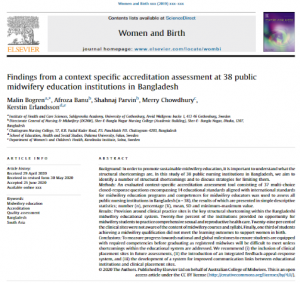
Background
In order to promote sustainable midwifery education, it is important to understand what the structural shortcomings are. In this study of 38 public nursing institutions in Bangladesh, we aim to identify a number of structural shortcomings and to discuss strategies for limiting them.
Methods
An evaluated context-specific accreditation assessment tool consisting of 37 multi-choice closed-response questions encompassing 14 educational standards aligned with international standards for midwifery education programs and competences for midwifery educators was used to assess all public nursing institutions in Bangladesh (n = 38), the results of which are presented in simple descriptive statistics; number (n), percentage (%), mean, SD and minimum-maximum value.
Results
Provision around clinical practice sites is the key structural shortcoming within the Bangladeshi midwifery educational system. Twenty-five percent of the institutions provided no opportunity for midwifery students to practice comprehensive sexual and reproductive health care. Twenty-nine per cent of the clinical sites were not aware of the content of midwifery courses and syllabi. Finally, one third of students achieving a midwifery qualification did not meet the learning outcomes to support women in birth.